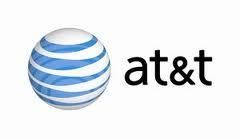AT&T Preps U-Verse Speed Boosts

AT&T is on track to complete U-verse upgrades that will boost downstream Internet speeds to 45 Mbps “in the next few months,” and get the telco pointed toward speeds of 75 Mbps and 100 Mbps “in the near future,” company SVP and CFO John Stephens said Tuesday during the AT&T’s second quarter earnings call.
The coming speed increases are one result of Project VIP, a three-year- capex investment plan that will see AT&T expand its U-verse footprint by an additional 8.5 million customer locations, for a total penetration of 33 million homes. AT&T is also spending a good chunk of that cash to deploy its Long Term Evolution network, which should be “substantially complete” by the summer of 2014, according to AT&T Mobility president and CEO Ralph de la Vega.
AT&T’s coming wireline speed upgrades could be welcome news to customers who need more than 24 Mbps, the downstream maximum speeds supported by AT&T’s current, fastest Internet tier, Max Turbo. Still, they don’t pose a threat to overtake the speeds offered by most major U.S. cable MSOs, which have already deployed DOCSIS 3.0 tier that advertise maximum downstream speeds of 100 Mbps or more.
U-verse continues to pay dividends for AT&T ahead of the VIP upgrades. It added 641,000 U-verse Internet subs in the second quarter, extending its total in the category to 9.1 million, representing more than 50% of its total broadband base. But those additions were not enough to avoid a net loss of 61,000 wireline broadband subs in the period, as AT&T continued to lose customers who were subscribing to the telco’s aging DSL service.
According to AT&T, 59% of U-verse broadband customers take a plan that delivers 10 Mbps or more, up from 52% in the year-ago quarter.
AT&T isn’t the only telco talking about speed boosts this week. On Monday, Verizon Communications launched a 500 Mbps (downstream) FiOS Internet tier that starts at $299.99 as a stand-alone service.
Verizon’s cable competitors have yet to respond in kind, but the latest DOCSIS 3.0 modems are capable of bonding 24 to 32 downstream channels – enough to provision a tier that would advertise speeds of at least 300 Mbps. Comcast is using its fiber-based Metro Ethernet platform to deliver a 305-Meg residential service in its Northeastern systems.
Multichannel Newsletter
The smarter way to stay on top of the multichannel video marketplace. Sign up below.










